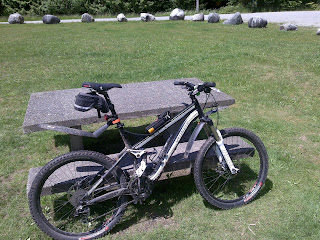So far I have been using the following gear combinations on Bridal Path, Seymour, N. Vancouver:
1. Golf Course parking lot-> Horse Loop until the "T" intersection by the fence (before the uphill section)- GRANNY and BIGGEST RING in the back.
2. For the remaining sections (with some exceptions) -MIDDLE ring up front, THE BIGGEST ring in the back.
3. For "step-like" obstacles MIDDLE ring up front, THE SECOND BIGGEST ring in the back.
4. Very steep section going East not far from the "T" on the Hyannis side (I will post a separate post with the picture) GRANNY ring up front, THE SECOND BIGGEST ring in the back. I tried to climb while sitting.
5. I will try to post pictures with "tricky" sections and the gears used.










